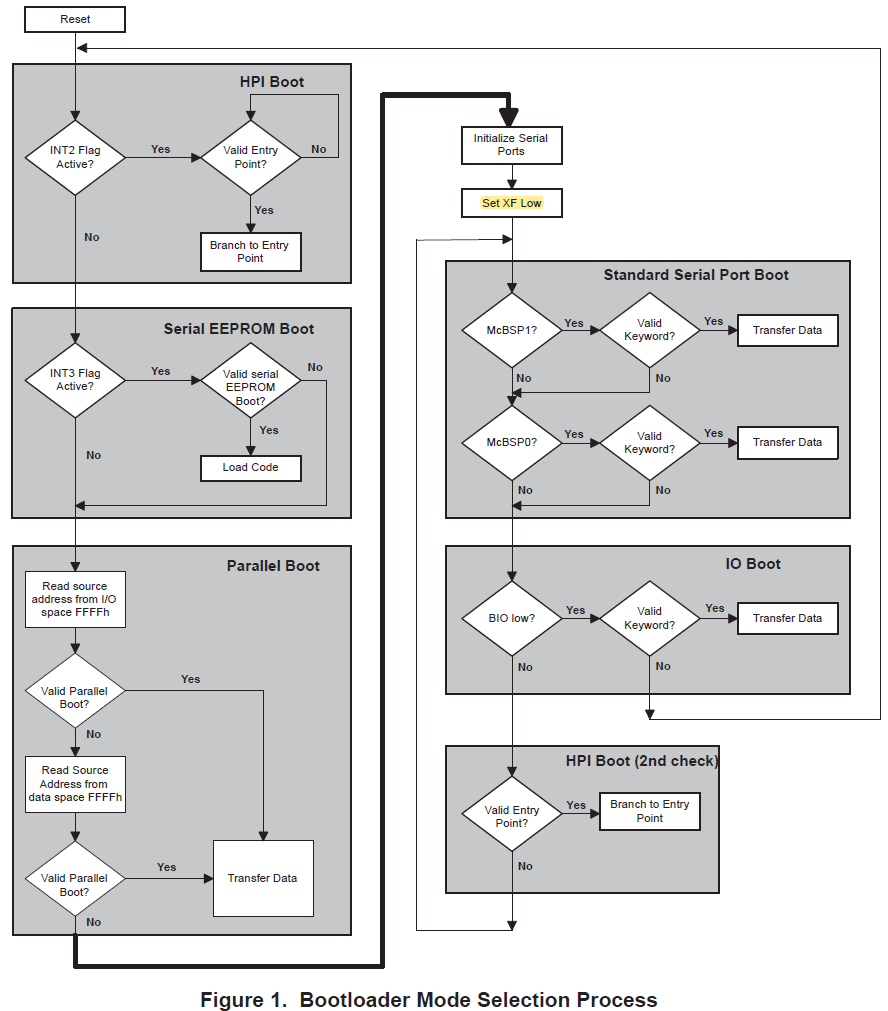Other Parts Discussed in Thread: TMS320UC5402
Hi,
I have one question regarding TMS320VC5402 boot way(Standard Serial Port boot, 8bit).
My customer is trying to boot C5402 board(it is unique board) by McBSP 8bit serial boot.
But now, XF output signal is not changed from high to low after serial port initialization.
Customer's board is unique board, the parallel boot was used for this board's boot when old time. And customer modified the board from "parallel boot" to "standard serial port boot" in this time.
They use "SPRA618B TMS320VC5402 and TMS320UC5402 Bootloader" appliation report as a reference.
The board pin settings are the below.
MP/MC=L (microcomputer mode)
INT2=H
INT3=H
BIO=H
(INT1=H)
(INT0=H)
X2 CLKIN = 14.4MHz
CKOUT = 7.2MHz(This is confirmed)
McBSP ports are not input the signal yet.
BCLKR0=0
BDR0=0
BFSR0=0
BCLKR1=0
BDR1=0
BFSR1=0
Pins setting is fixed as the above. After enough time from CLK input, the reset "RS"is released from low to high.
According to the SPRA618B, HPI boot - Serial EEPROM boot - Parallel boot is passed because the above pin settings, and the serial ports are initialized, then the XF signal is changed to low.
But, on customer's unique board, XF pin is never changed to low.
Also , EMU1/*OFF pin is pulled up through the external resister(22kohm).
As additional information, at present, the Serial EEPROM boot is working well with customer board But customer would like to use McBSP 8bit serial boot.
Where should the customer check for solving this issue?
Please advise me.
I appreciate your quick reply.
Best regards,
Michi



